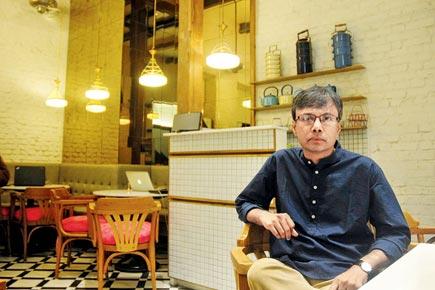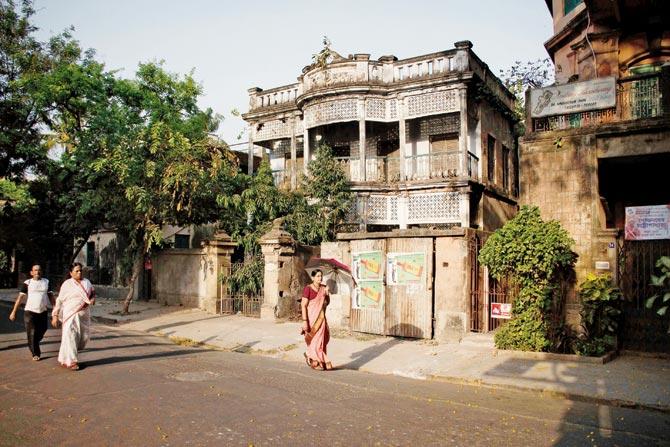Novelist Amit Chaudhuri talks about 15 years of his anthology of modern Indian literature and 25 years of his first novel


ADVERTISEMENT
“When selecting texts, I had made it clear that I am not going to make an official or representative list. The idea was to make the selection critical and creative; in a way that the text is in continuum and alive in the mind of the reader, the critic and the author. Else it would have been dead text,” says Amit Chaudhuri, author, critic and editor of the The Picador Book of Modern Indian Writing.

This house at 32 Hindustan Park is an example of what Amit Chaudhuri is campaigning to preserve. The owners wish to make this survive, but one of the owners has sold his share leaving the property in dispute. Pic courtesy/Manish Golder
The “text” indeed was alive and has completed 15 years carrying the rich legacy of writing in India that is not just English. The trigger, Chaudhuri says, was a “constraining” idea of conflating Indian writing with Indian English writing at that time.
English for India
“That kind of English writing did not include writing before Midnight’s Children,” he says. For Chaudhuri, who had grown up in an environment where critical discussion about the prose of Bengali writers like Bhibutibushan Bandyopadhyay and Premankur Atarthi was a part of domestic life, and who then went on to discover fantastic works of the likes UR Ananthamurthy translated by AK Ramanujan, this soft dismissal was baffling.
“Unlike the new Indian novel, their work was not so bothered with the nation and society as such,” he says. It was a kind of modernity that arrived in the vernacular, was “cosmopolitan” and experimental. This ethos of modern writing was what he decided to bring out in the collection, which he says, “had to be in a relationship and not in a cluster” — a failing of many anthologies.
Works of Saadat Hasan Manto, Sukumar Roy, Bibhutibhushan Bandyopadhyay, UR Ananthamurthy, Nirad C Chaudhuri, Ruskin Bond, RK Laxman, Vikram Seth, Salman Rushdie find space in this anthology along with other important translated and English works. Asked, if he saw a bigger anthology in the future including more literatures of the subcontinent that has a shared history and culture, he says what would interest him more is a wider ambit of literatures that have continued to exist beyond the “excitement of globalisation”. Where an Urdu text and a German text interact with their own unique differences.
Kolkata, the muse
The vernacular or provincial modernity that he mentions, was also the experience that led to his first novel based in Kolkata. A Strange and Sublime Address entered the literary scene 25 years ago to wide acclaim and fixed his place as a writer of prose that is “impossible to put in any category at all” as Salman Rushdie said. The book, now printed again, leads to the question, if that modernity still exists in the city, which can be safely but with a possible dismissal from him, called his muse.
He says that though not all is lost, people are mostly not even aware what they are losing. “We don’t engage with this modernity. We say things like MF Hussain is our greatest painter but we do not understand why. We have disowned the assets of secular modernity,” he says.
And in this regard, his campaign to save the houses of Calcutta that represent the unique architecture of that era, comes to the fore. “It is not an act of nostalgia but an act to save what we have and should value. Yes, these are old houses but they are also new houses in a way, representing a confidence of post independence Calcutta.”
This “legacy” which is embedded from grilles to Bengali signs in shops is something, he says, people fail to see. “By legacy, we think of the Taj Mahal but not these everyday marvels,” he explains.
There’s a Mumbai book in the pipeline
For Mumbai fans of Chaudhuri, there’s good news. He has completed his new novel set in Mumbai. He says it is shorter than a novel and much longer than a short story.
 Subscribe today by clicking the link and stay updated with the latest news!" Click here!
Subscribe today by clicking the link and stay updated with the latest news!" Click here!






